BRIEF HISTORY OF ST.SEBASTIAN'S FORANE CHURCH, MATHIKERE
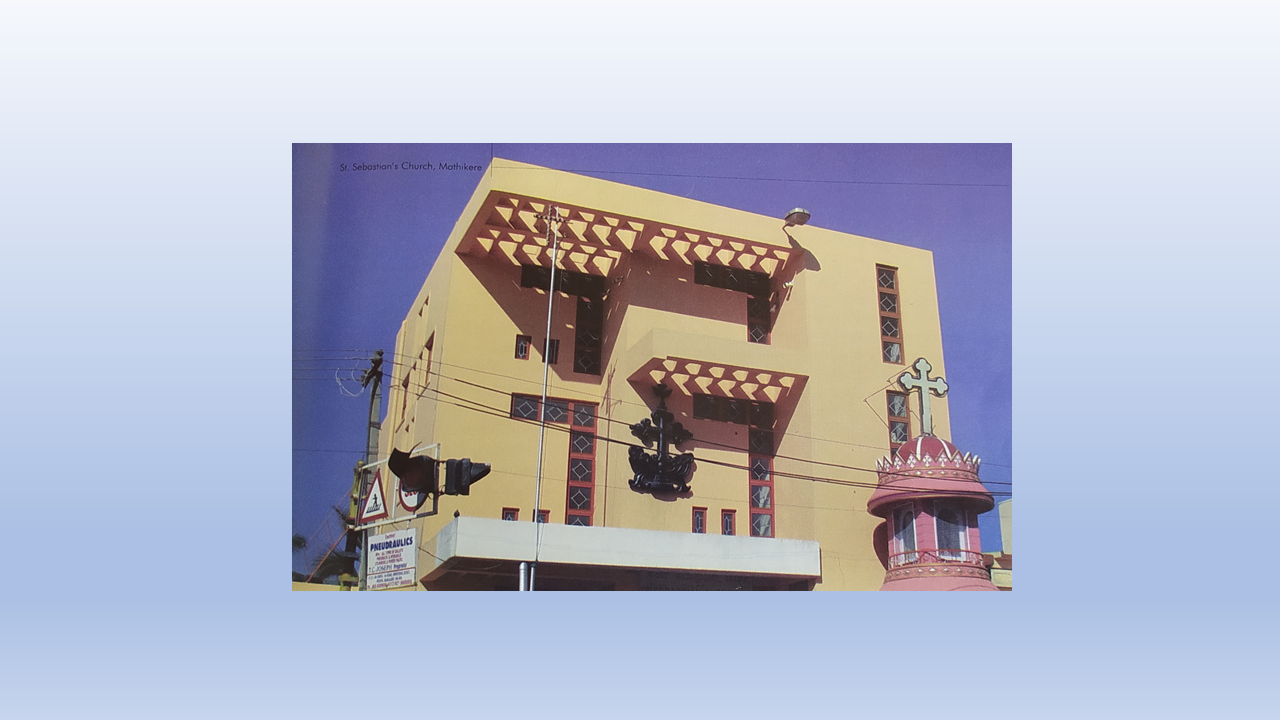
Keralites are always well appreciated, unfailingly with a bit of envy as a community who continuously strive hard to surpass and surmount all odds for survival and revival for a vivacious life. With its pleasant climate, plenty of job opportunities, and especially friendly local inhabitants, Bangalore became an ideal haven for Keralites like many other immigrants as early as the 1930s. Indian Railways, Indian Army, Tata Institute (present IISc), Bharath Electronics, and HMT were some of the public sector organizations which provided jobs to the Keralites who reached Bangalore during the pre-independent era. Most of them settled down at Jalahalli, Yeswanthpur, Malleswaram and at the areas around the Ulsoor. The Private and Public Industrial establishments that came up after Independence threw open a lot of job opportunities for the migrant population. The prosperity and fortunes of the people who migrated earlier encouraged more Keralites to follow suit. From the early days itself, Yeswathpuram was a flourishing center of merchandising business. Many people from Kerala started their own businesses and became successful. Many educational institutions, strategic business industries, and manufacturing units enhanced the business atmosphere of Yeswathpuram.
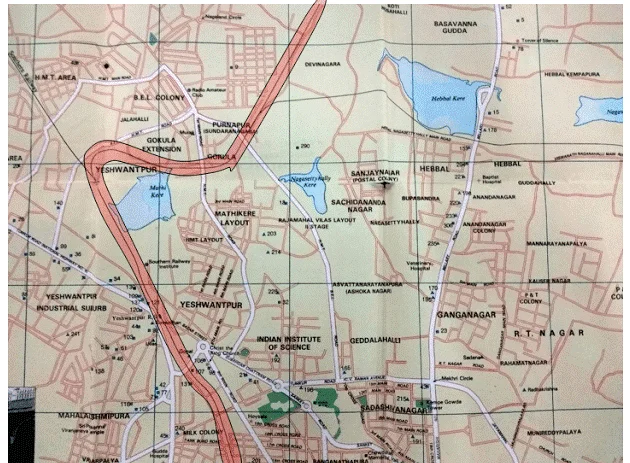
Section of map of Bangalore in 1995, focusing on North-West Bangalore. Source : Tourist Guidebook of Bangalore, 1995
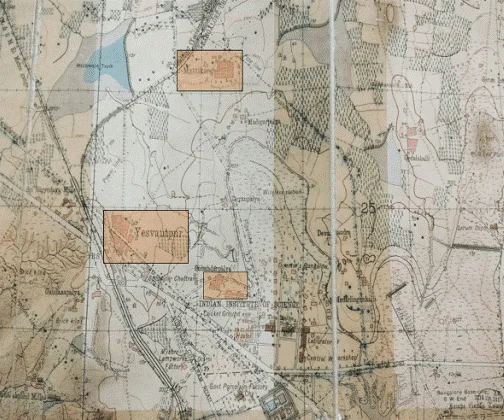
Section of a map surveyed in 1935-36 and published in 1948, Source: Bangalore Guide Map 1948. Rectangle marks show ‘Yeswantpur’, ‘Subedarpalya’ and ‘Mathikere’.
The early migrant Catholics from Kerala settled in and around Yeswanthpur and Malleswaram. Far away from their homeland, seeking their livelihood among an alien society and language, the Catholics never yielded or imbibe the cultural traits of the localites but relentlessly kept their spiritual fervor and steadfast faith, and native tradition. Even though the Malleswaram Pontifical Seminary (established in 1934) and the adjacent Christ the King Church (1947) catered to the spiritual needs of the Catholics, the Syro-Malabar Catholics lacked the opportunity to capitalize on the spiritual resources in their own language.
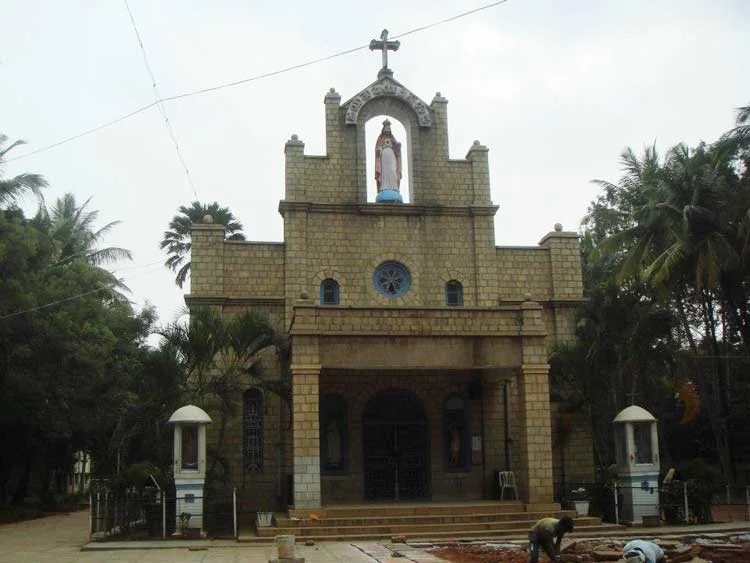
Christ the King Church, Malleswaram
All parishes in Bangalore were under the jurisdiction of the Archdiocese of Bangalore, and the liturgy was in Latin order. After the Second Vatican Synod (11 October 1962 – 8 December 1965), there was an increased interest among the Kerala Catholics in having sacraments and liturgy in Malayalam under Syro-Malabar Rite. In this context, the support of Dharmaram College teaching priests and later the Claretian priests are remarkable towards the achievement of these goals. After a lot of discussions and consultations in this regard, the Malayalee Christians of Christ the King parish, though a few in number, formed an organization with the name “St. Sebastian Catholic Association” and sought after the possibility of having liturgies in their mother tongue. As a mark of initial success, the Malayalis planned and executed the first-ever celebration of the feast of St. Sebastian in the month of January 1955 at Christ the King Church. Since then, his festival has been celebrated every year without fail.
In 1975, the aims and objectives of St. Sebastian's Catholic Association were revised and the organization started its activities under the banner of "Malayali Catholic Welfare Association"(MCWA) based at Christ the King Church.
It is worth mentioning that during those days the members of the organization used to conduct home visits on foot and on bicycles. In the absence of modern means of transportation and communication, the meetings and activities were organized and facilitated purely due to the willpower, unselfish attitude, and faith fervor of the community members.
With continuous prayers to the Almighty Lord and submission of petitions to the Bangalore Diocese, the Association obtained permission to perform Way of the Cross in Malayalam for the first time on Good Friday in the year 1975. In the same year on 9th November, they were permitted to offer Holy Mass in Malayalam in the Latin order. Followed by this, permission was granted to offer just one Holy Mass in Malayalam on a Sunday once a month.
So far so good and the community grew in number and flourished in many ways. From the Easter Sunday of 1981, permission has been granted to celebrate Holy Mass every Sunday in Syro-Malabar rite.
The objectives of the MCWA did not stop therewith. It had a larger vision of establishing Syro-Malabar parishes within the Archdiocese of Bangalore. The Dialogue started in 1978 under the aegis of the Dharmaram Theology College with the Archdiocese of Bangalore to establish a Syro-Malabar Church in Bangalore. In the beginning, the Archdiocese was not in favour of establishing a Syro-Malabar church in Bangalore. But they were ready to receive the service of priests from Dharmaram College for the pastoral needs of the Syro-Malabar Catholics in the Archdiocese of Bangalore. While agreeing to send priests to various churches in Bangalore for attending pastoral needs of Malayalee Catholics, the dialogue continued for establishing Syro-Malabar parishes, and copies of the letters were sent to the Apostolic Nuncio, the C.B.C.I., and Cardinal Joseph Parekattil, the Archbishop of Ernakulam. Nearly after five years of continued dialogue with the Archdiocese of Bangalore and the CBCI, a favourable reply had come to the Rector of Dharmaram College. The Archbishop of Bangalore issued a decree of erection of St. Thomas parish at Dharmaram College Bangalore. The official inauguration was done on March 19, 1983 at Dharmaram College Chapel by His Grace Dr. P. Arokyasamy, the Archbishop of Bangalore
Later in 1989, St. Thomas parish was sanctioned at Jalahalli. The jurisdiction of Jalahalli St. Thomas Parish included the vast areas of Yeshwanthapuram, Vijayanagar and Sultanpalayam. For the Syro-Malabar Catholics who lived in these areas, the distance to the Jalahalli shrine was a long one. Therefore, the residents of Malleswaram, Yeshwanthapuram and Mathikere wished to have a church somewhere near Yeswanthapuram, and in response to this wish of the Syro-Malabar Catholics, the Claretian Ministry and the concerned authorities purchased a plot of land alongside the Mathikere Main Road. On 15th August 1990, at the Malleswaram Claretian Seminary, a meeting was convened by the MCWA in the presence of the then Claretian Provincial Fr. George Nedumbalakunnel and Rev. Father George Thelliankal, and the latter was entrusted with the leadership of parish formation and church construction. Also, a group of selected individuals from different regions was appointed to speed up and facilitate the process.
After the preliminary work, the foundation stone for the church was laid on 6th January 1991 by Bishop Mar Joseph Kundukulam, Diocese of Thrissur. The construction work and fund raising had witnessed tremendous positive response and huge cooperation from the parishioners. On December 13, 1992, the Thrissur Bishop Mar Joseph Kundukulam inaugurated the church and opened it for worship. During the time, around two hundred families were regular members of the parish.
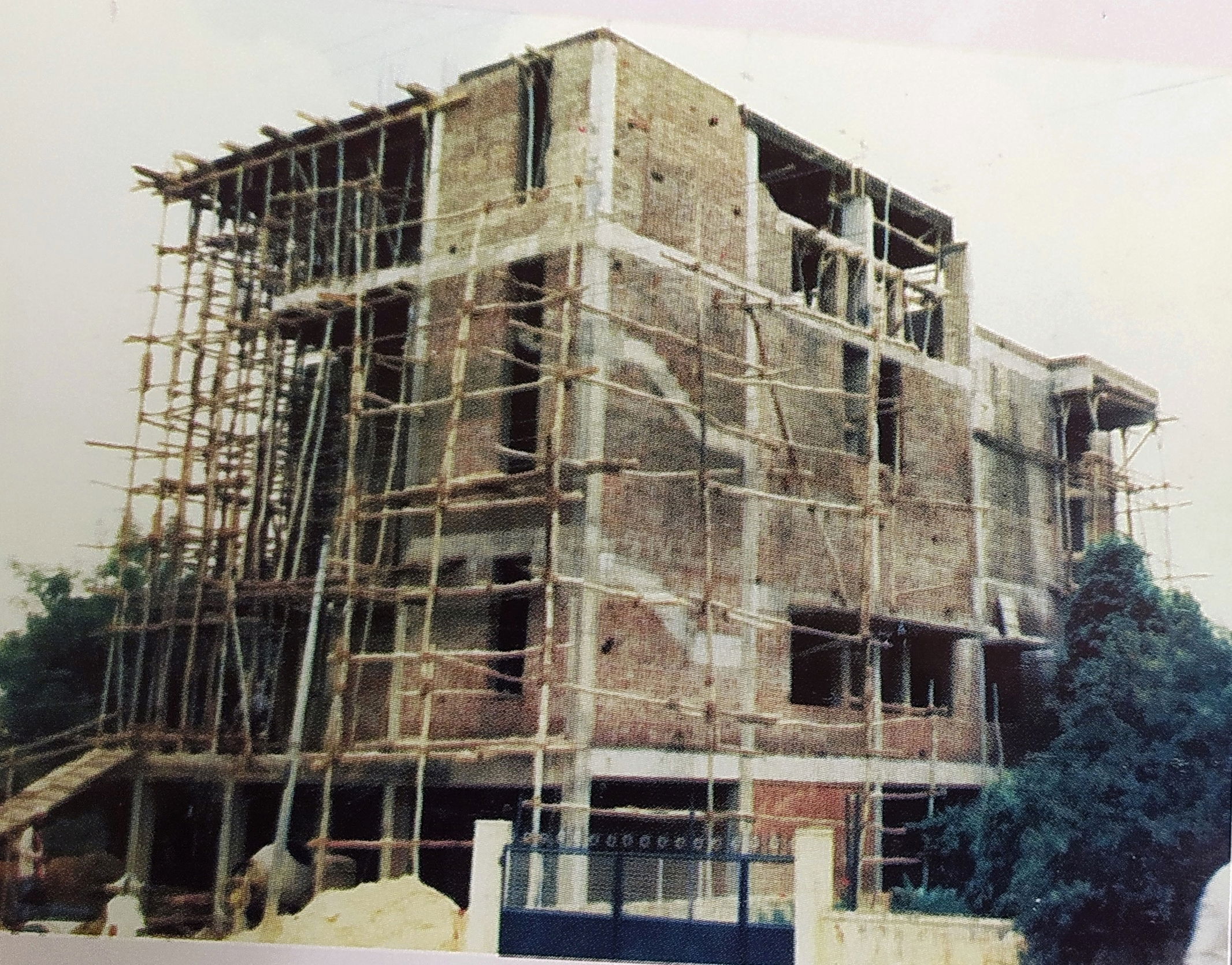
Church Construction in progress
After his first visit to St.Sebastian’s church, the Bishop of Bangalore Diocese Mar Alphonse Mathias, granted permission to the church to write and keep its own register. On the occasion, Rev. Fr. George Thelliankal was also appointed as Priest-in-Charge of the church. This enabled the initiation of catechism classes in the church and the formation of the St. Vincent-de-Paul Society. In 1994, Rev. Fr. George Thelliankal was transferred and was succeeded by Rev. Fr. Jose Pulingunnel. The parish fellowship and spiritual upliftment of believers flourished under the energetic leadership of Fr.Jose. In 1996 Rev. Fr Joshi Nirapel was appointed priest in-charge of the church. During his stint, with the help of the Claretian Ministry, the parishioners were able to purchase a plot of land for the cemetery near Abbigere, and a plot of land adjacent to the HMT Main Road.
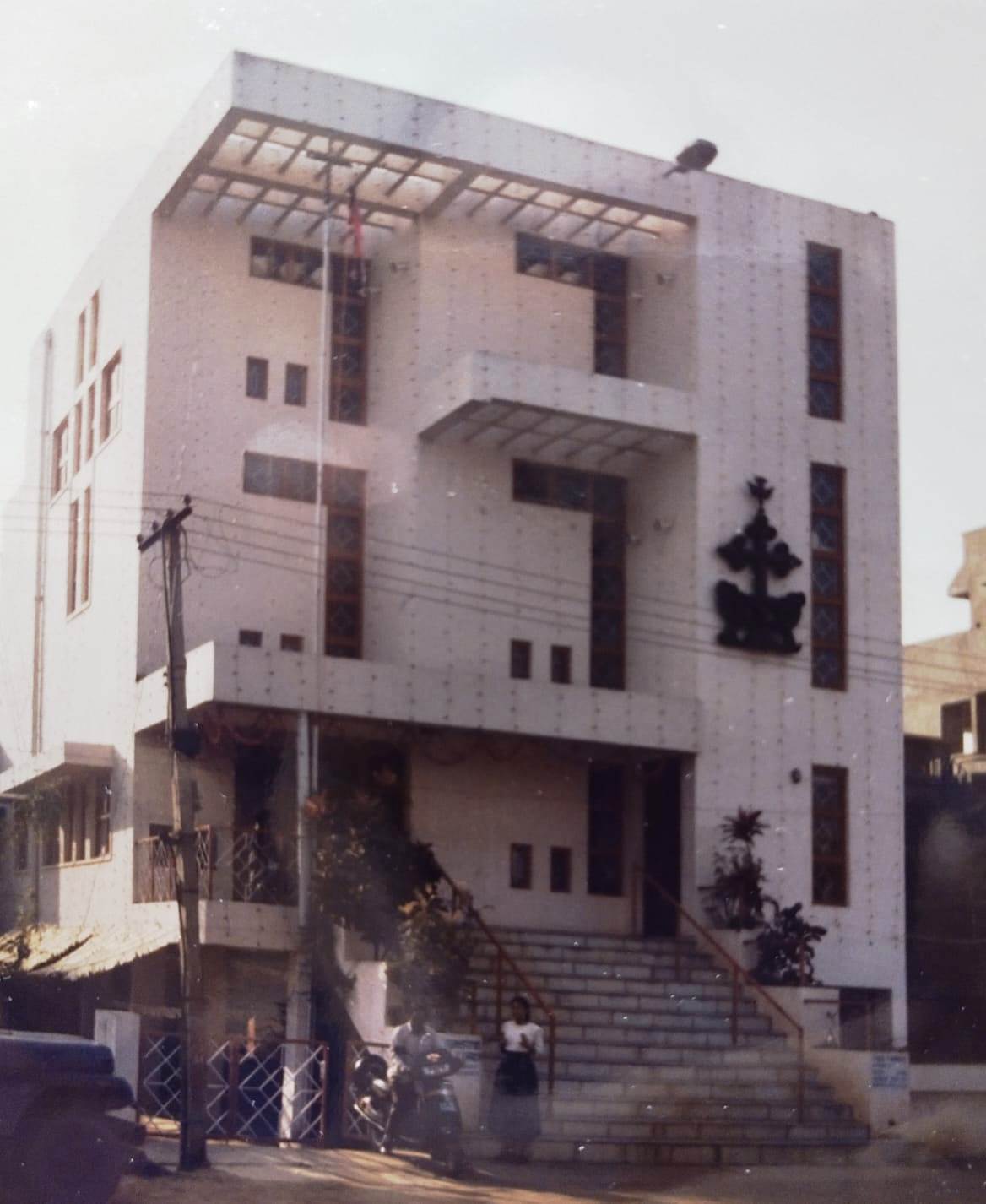
Old St.Sebastian's Church
In 1998 Rev.Fr. John Poovathani took over the charge from Fr. Joshi Nirapel. It was during this period that the parish family members were divided into different wards and each ward has been named after a Saint, and also started celebrating ward feasts. Fr.John worked tirelessly to make the church an independent parish, and consequently, on 8th September 1998, the Church was elevated to an independent parish. Fr.John was appointed as the first vicar of St. Sebastian’s Church, Mathikere.
Under the leadership of Rev. Fr. Noble Mannarath who was appointed in 2002 as Parish Vicar, the church bought another piece of land adjacent to the site of the church and merged it with the old site. It was around this time that an organization of mothers, Mathruvedi, was formed, and a parish publication, Sebastian Times, was started. On January 12, 2003, the church celebrated its tenth anniversary. In 2005 Fr. Noble was transferred and Fr. George Kollamparambil was appointed as the Vicar.
The land that the church bought adjacent to it became a blessing for developing the church. The proceeds from the sale of the lands purchased in the past were used for developmental activities. All these developments can be seen as grace bestowed by God as a reward for the constant prayers and efforts of the parishioners. In June 2008 Fr. George Kollamparambil got transferred and Rev. Fr. Binu K. Sebastian took charge as the vicar.
Due to the significant increase in parishioners and the need for additional catechism classrooms each year as the children were promoted from lower classes, the church experienced a space shortage and there was a pressing need for expansion. Apart from that, everybody felt the need for a parish hall and separate office rooms. All this gave rise to the idea of a new church complex. After discussion with all representatives of the parish, a Land Utilization Committee was formed to plan and make a blueprint and initiate activities to accomplish the project.
In June 2011 Fr. Binu K. Sebastian got transferred and Rev. Father George Pettayil was appointed Vicar of the parish. Fr.George had a huge responsibility of developing the church, and after careful studies, he reviewed the design for the expansion of the church with the help of the committee members.
The foundation stone of the new church complex was blessed in September 2012 by Irinjalakuda Diocese Bishop Mar Poly Kannukadan and the construction of the church was formally commenced. Following the event, in the presence of honorable MLA Dr. Ashwath Narayanan, parish vicar Fr. George Pettayil laid the foundation stone and started the construction work.
To facilitate the financial needs of this huge initiative, the generous contributions of believers and well-wishers from inside and outside the parish are highly admirable.
The foresight, dedication, perseverance, and efficiency of Fr. George to facilitate the construction work deserves the profound gratitude of the faithful. The parishioners too joined their hands together in continuous prayer, and through labor and sincere contribution supported the construction work. It was a conglomeration of the good hearts of the parishioners and the tireless efforts of the committee members along with the parish vicar, the dedication of the artisans and laborers that led to the realization of a cherished dream come true.
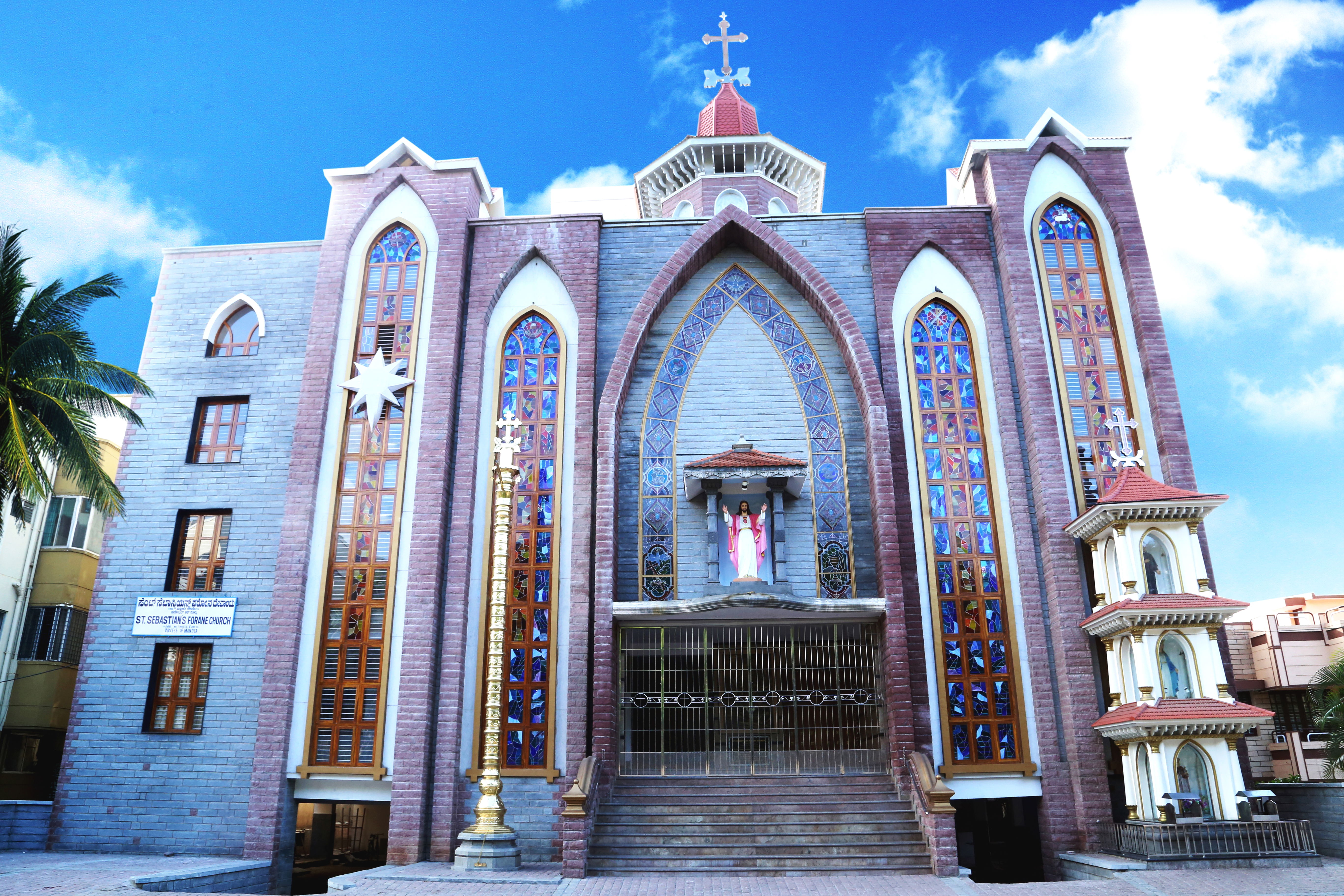
New St.Sebastian's Forane Church
Along with material growth, the spiritual upliftment of the parish is also given the utmost importance. Special organizations suitable for all ages to grow and develop like SMYA for youth, Young Couples Association for adults, Pitruvedi for fathers, Mathruvedi for mothers, St. Vincent de Paul, etc. are working very efficiently in this parish.
As God richly blesses the parish of Mathikere, He also blesses its people with wealth, wisdom, piety, and culture.
As a mark of the spiritual growth of this parish, Lijo Chalissery, son of Anne Rappai couple of the parish, was ordained for the Diocese of Kalyan on 2nd April 2008 as the first priest from Bangalore to the Syro-Malabar Church. Also, Simi George, the daughter of the Jansi George couple of the parish, joined the M.S.M.I church on 5th November 2011 and took the first vows. The recent additions to the Holy Orders from this church are Rev. Fr. Augustine Thottathil CMF and Rev. Sr. Dr. Jennifer.
It is commendable that many individuals who have made valuable contributions in the fields of industry, arts and science, and technology are members of this parish.
A community committed to the Syrian tradition and unwavering faith in St.Thomas submitted their heart and soul in prayer to the parish intercessor St. Sebastian to plead for God’s mercy and they literally witnessed God working wonders.
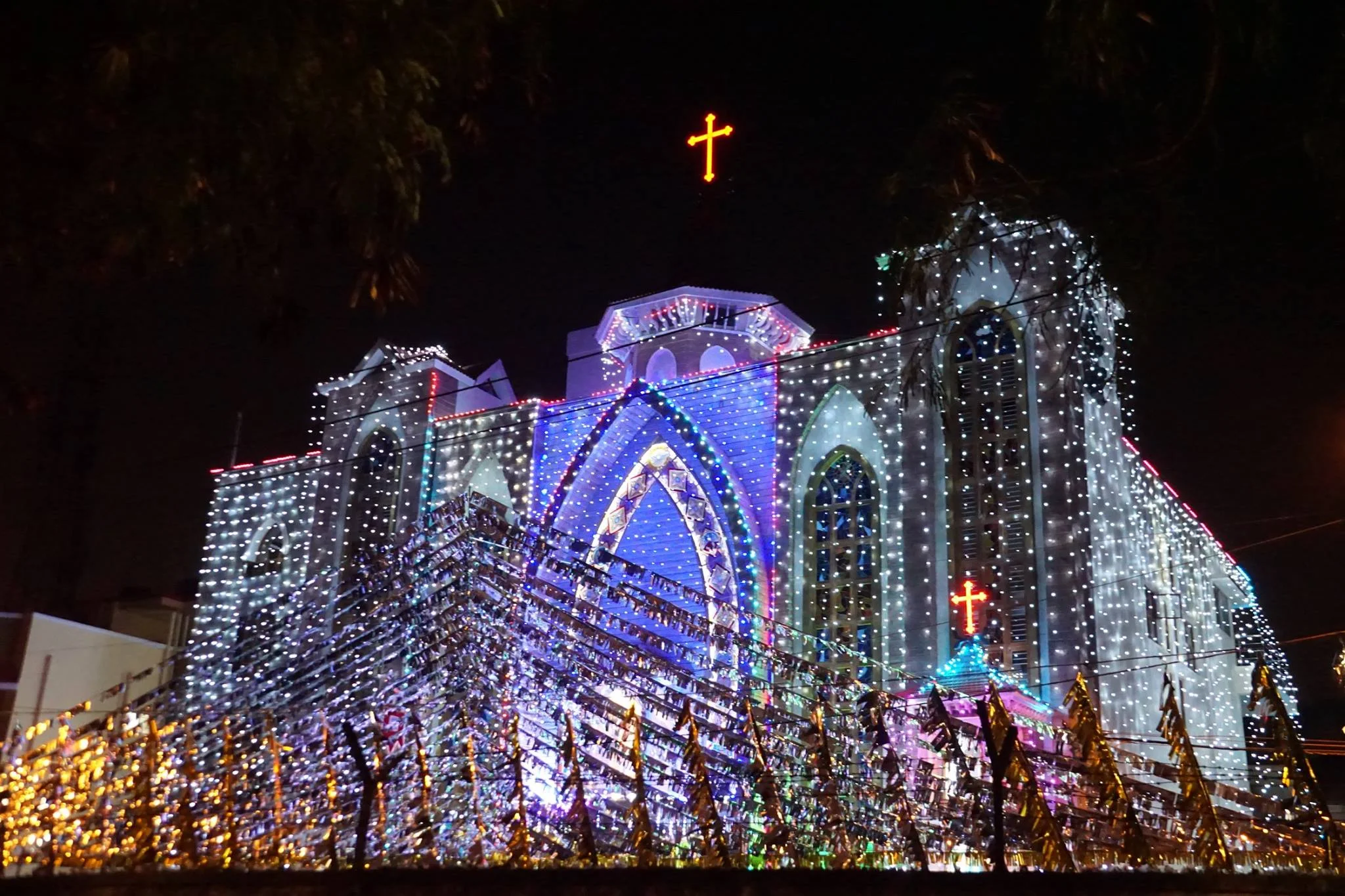
Another perennial wish of the Syro-Malabar Malayalies settled in Bangalore was to have their own diocese. After Cardinal Mar George Alencheri was installed as Major Bishop, when he visited Bangalore, the Syro-Malabar community in Bangalore raised this demand, and many persons from the parish attended the meeting held at Jalahalli for this purpose. Following this, as a result of further work and prayer, the Diocese was expanded by adding the Bangalore Syro-Malabar parishes to the Mandya Diocese. The sincere efforts and contribution of Mar Raphel Thattil, the then apostolic visitor of the expatriate community is gratefully remembered for achieving this remarkable breakthrough.
On 18th October, 2015 Rev. Dr. Anthony Kariyil, CMI has been ordained as the new Bishop of Mandya Diocese. As a further step, St. Sebastian's Parish was elevated to a Forane Church and the Church was declared a place of pilgrimage during the Great Jubilee Year of Mercy (8th December 2015 to 20th November 2016), encouraging the fervor and fellowship of the parishioners.
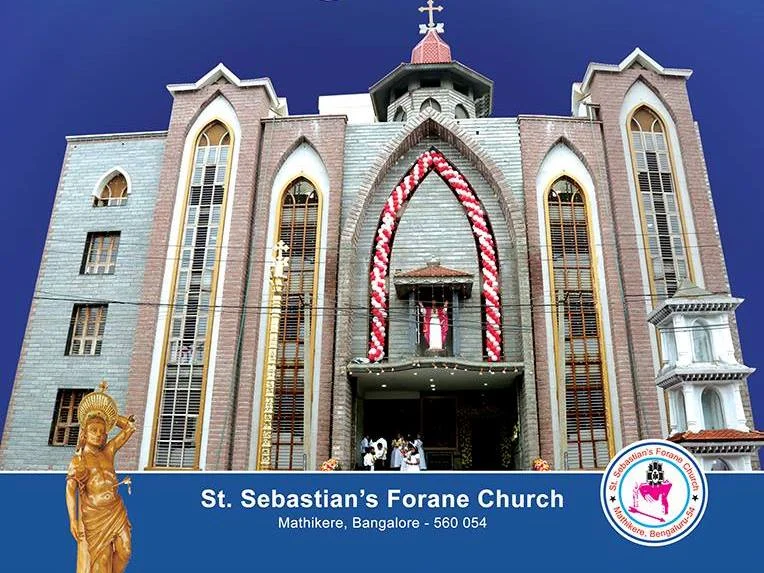
The fact that Mathikere St. Sebastian's Parish, which was a small community, has been transformed into Forane with more than 500 families in the last 25 years is a proof that God protects His children who work closely with Him. Even when faced with the harsh realities of expatriate life, this community preserved the Christian faith and innate traditions that they were born and brought up with. This church and the people of God in Mattikere are the visible sign of an invisible God.
Being grateful to Almighty God for completing such a beautiful church complex, we, the parishioners of Mathikere, seek the intercession of our parish patron St.Sebastian for continuous spiritual and economic welfare for all the believers of the present and coming generations.